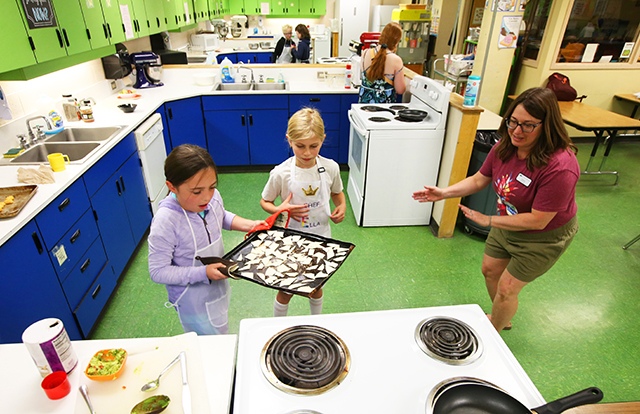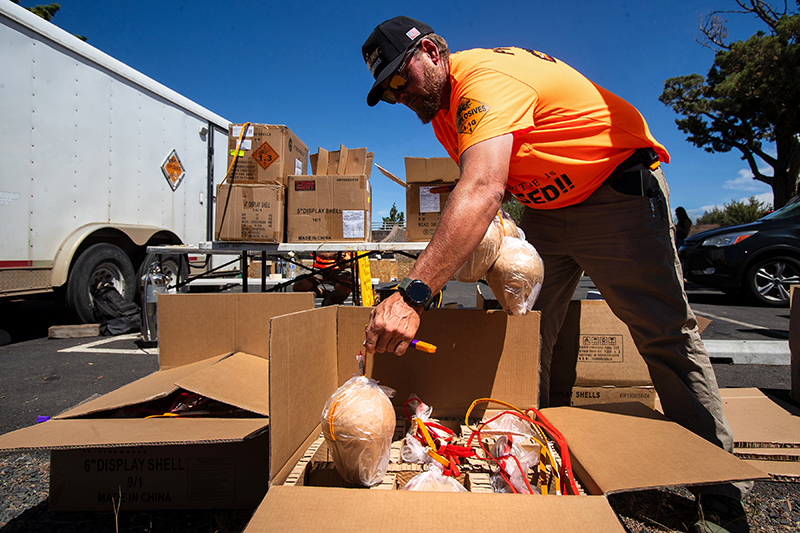Bend-La Pine Schools feeds thousands with local food made from scratch
Published 6:30 am Saturday, April 12, 2025

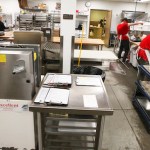

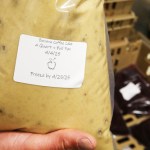
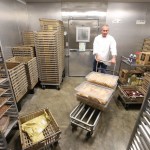
The air smelled like cinnamon rolls. Bags of sweet and sour sauce lay in a cold water bath. Bakers and cooks moved quickly back and forth, shaping dough, checking on machines and moving trays around. At 7:30 a.m. Wednesday, the production kitchen at Bend High School was in full swing more than three hours after staff first arrived.
An hour earlier, trucks were loaded with ingredients and ready-made food in bags, intended for schools throughout Bend, La Pine and Sunriver. Temperatures were checked and recorded and items were ticked off lists as the kitchen’s cooler slowly emptied.
Nearly 20 people work in the Bend-La Pine Schools production kitchen, which will be expanded as part of the Bend High renovation project currently underway. Right now, the kitchen is competing with the Bend High servery and cafeteria for space. Once the servery moves, that will free up space for the bakery and another cooler, said officials.
“We make about 85, 90% of all the food from scratch,” said TJ Bennett, the district’s executive chef. “Some (people) don’t know that every kid gets to eat for free, now that we have that CEP (Community Eligibility Provision) program, but the other thing is people have a mentality of pre-packaged school lunches and have no idea that we are making everything from scratch here.”
That means students are not just having school-lunch pizza and a carton of milk. Menus include white bean pork chili, teriyaki popcorn chicken and al pastor tacos, just to name a few.
The district serves around 16,000 meals per day. Approximately 60% more breakfasts and 40% more lunches are being served now that meals are free this year. For schools that qualify, nutrition services also provides a hearty after-school snack, which is separate from the national school lunch program.
Forecasting servings in advance
The production kitchen includes a bakery area, hot food preparation area, two walk-in coolers and more.
Bennett tries to source as much local food as possible. The kitchen uses flour grown in Madras.
“It’s not just opening up a box or a can and adding some salt and spices to it,” he said. “Our macaroni and cheese…we’re actually putting butter and flour and making a roux, cooking the roux, adding our milk products and three different types of cheese and actually making the actual macaroni and sauce.”
Each school forecasts how many servings it will need for meals. If the school ran out of servings or had food left over in previous months, school nutrition services adjust the number to ensure every kid is fed.
Hot food is made separately, bagged in reduced oxygen packaging to extend shelf life and stored in the cooler. Each bag includes tags with the day the food was made, the day it expires and the day it was frozen. Items like pasta are sent to the schools dried and then cooked on-site. Each bag is measured and labeled, so schools know they are getting exactly 2 pounds of pasta per bag, for example, which works out to a particular number of servings.
Working to a tight schedule
Staff prepare food a couple of days to a week in advance to have time to make it, chill it and prepare for transport. Menus are planned a month or more in advance, said Bennett. The kitchen also has to plan ordering in advance so ingredients arrive when they should.
Protein products are brought in separately and stored in a distribution warehouse nearby, said Bennett. Nutrition services works with Aloha Produce for fruit and vegetable deliveries. Secondary schools are able to get deliveries directly to the schools, while elementary schools don’t have that option. Elementary schools send the production kitchen a produce list, and every other day, the schools receive fresh produce.
“If you come on a Monday, it is packed top to bottom with everything,” Bennett said of one of the coolers, filled with carts of food for each school. “Starting at 6:15, we have drivers that come in. They’re doing three trips each, we have a total of three, four trucks…They’re running down to south county, La Pine, Sunriver, through the whole school district. They drop off these carts, so the schools receive them in the morning so they can start breakfast, start lunch, they send us back the empty carts and it repeats.”
Everything is kept on a tight schedule. Perishable items have notes with the time the item was loaded, the temperature at that time and the initials of the person who checked. Schools take temperatures when the items arrive.
“I have a record here, they have a record at their school. This is just in case I get a mom, that’s like ‘oh, my kid got sick from your food.’ We can backtrack and quadruple-check that we have all the times and temps…We want to make sure nobody gets wrongfully accused,” said Bennett.
Healthy food that tastes good
In 2009, the district turned the Bend High School kitchen into the district’s main kitchen. Previously, staff worked out of three production kitchens: the bakery at Sky View Middle School, a kitchen at Bend High School and another at High Desert Middle School.
Garra Schluter, the district’s director of nutrition services, said the production kitchen is looking to possibly add another oven once there is more space after the renovation. Mostly, everyone’s looking forward to being more spread out.
Though the recent loss of the U.S. Department of Agriculture federal programs Local Food for Schools and Local Food Purchase Assistance Program did not affect Bend-La Pine Schools’ nutrition services very much, Schluter said there would be a large impact if other federal funding for nutrition services were cut. The district has a Community Eligibility Provision through the U.S. Department of Agriculture, which allows every student to eat for free. If that vanished, the district would have to return to the old system of navigating applications for free and reduced-price meals and managing charges for students. Raising the community eligibility threshold to 60% from 40%, which would remove about half of participating schools, has been proposed by Republicans in Congress.
“Our ultimate goal is always to have good food. That is something that we always strive to create, with having scratch cooking, having farm to school products, get kids to come in and try things and eat with us as opposed to going off campus, in the high school setting, for example,” said Schluter. “And really just having healthy, great food that actually tastes good. There’s that perceived school lunch that is out there and we’re always trying to not go down that road.”











